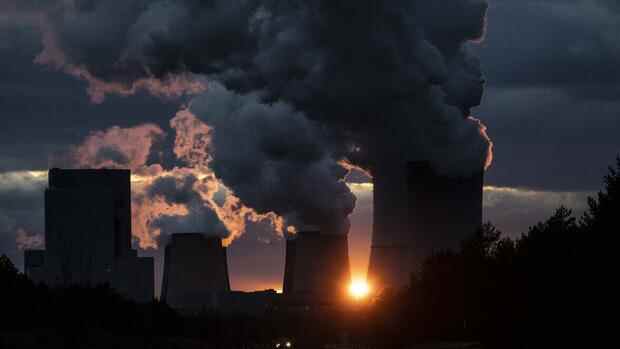The Intergovernmental Panel on Climate Change demands the use of less fossil fuels.
(Photo: imago images/photothek)
Berlin More drastically than ever before, the Intergovernmental Panel on Climate Change (IPCC), known as the Intergovernmental Panel on Climate Change (IPCC), made it clear on Monday that man-made global warming can only be limited to 1.5 degrees Celsius in pre-industrial comparison with “immediate and far-reaching emission reductions in all sectors”. will be.
The United Nations confirmed this goal last year in order to avert the worst consequences of climate change. But what are these immediate and deep emissions cuts? The Handelsblatt provides an overview of the central measures:
energy
The scientists call for a move away from fossil fuels, including coal-fired power plants. The overall consumption of fossil fuels must be significantly reduced, low-emission energy must be used, the switch to alternative energy sources must be made, and energy must be used efficiently and sparingly.
Industry
The Intergovernmental Panel on Climate Change is thinking about using materials more efficiently, about circular economy and recycling. Waste should be minimized. New production processes, low-emission or zero-emission electricity, the use of hydrogen and the underground storage of CO2, Carbon Capture and Storage (CCS), are needed.
Top jobs of the day
Find the best jobs now and
be notified by email.
technology and innovation
Investments and policies are driving technological innovation, they say. In many developing countries, especially the least developed countries, low-emission technologies would be slow to adopt, so there is a lot of potential here.
traffic
The Intergovernmental Panel on Climate Change calls for more energy-efficient means of transport. He sees the greatest CO2 reduction potential in road traffic in electric vehicles with low-emission electric drives.
The IPCC sees the greatest CO2 reduction potential in road traffic in electric vehicles.
(Photo: imago images/CHROMORANGE)
In the air and on the water, the experts advocate improved production processes for sustainable biofuels, synthetic fuels and low-emission hydrogen. Thanks to improved battery technology, the chance of low-emission electric drives is also increasing in freight transport.
cities
According to the experts, urban areas should convert their traffic to electricity and use low-emission energy sources for this purpose. Parks and open spaces, wetlands and urban agriculture can absorb and store CO2 and also reduce the risk of flooding or inner-city heat islands.
building
There is a lot of potential in the building sector, but due to the large number of market participants, the challenges are also considered to be very great. Low-emission or zero-emission heating, plus intelligent technologies to control energy consumption.
Agriculture and Forestry
Agriculture and forestry must be used more than before to store CO2. This is possible through reforestation or the rewetting of moors: both forests and moors bind CO2.
(Photo: imago images/ari)
Another possibility is to grow plants that store carbon dioxide, such as trees, rapeseed or maize, then burn them in biogas plants to produce electricity and capture the resulting CO2 and store it underground: Climate science calls such processes BECCS (Bioenergy with Carbon Capture and Storage). Norway is also examining ways to store carbon dioxide in the seabed. However, all measures could not compensate for the necessary restrictions in other sectors.
Lifestyle Changes
The scientists warn that it will not work without behavioral changes. Fewer car trips, fewer flights, cycling and train travel instead, video conferences instead of business trips, home office, heat pumps instead of gas heating – all of this reduces CO2 emissions. Eating less meat is also part of this: cattle, for example, emit the extremely climate-damaging gas methane.
Working from home reduces CO2 emissions.
(Photo: dpa)
In addition, forests that store CO2 are cut down to create new pastures or fields – and other greenhouse gases are released during the production of animal feed, for example as a result of fertilization. But the right policies, infrastructure and technologies are needed to enable behavioral and lifestyle changes.
More: The new IPCC report describes the need for action and the options for climate protection more clearly than ever before. But it needs more speed, analyzes guest commentator Sabine Fuss.
